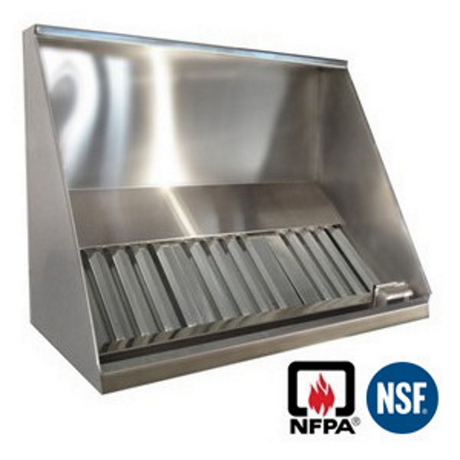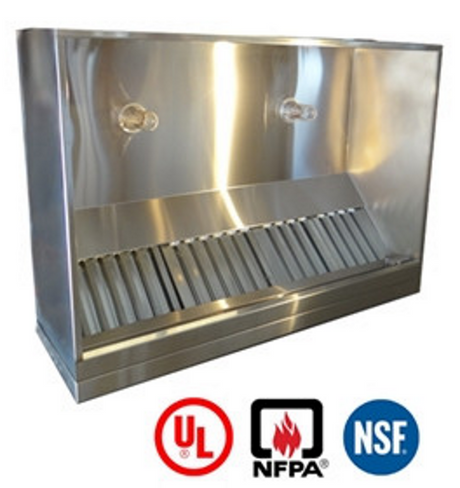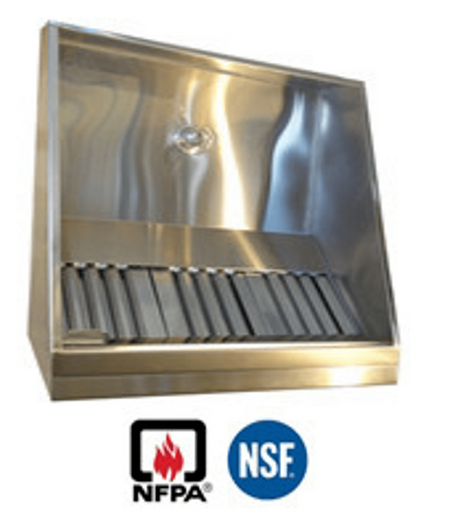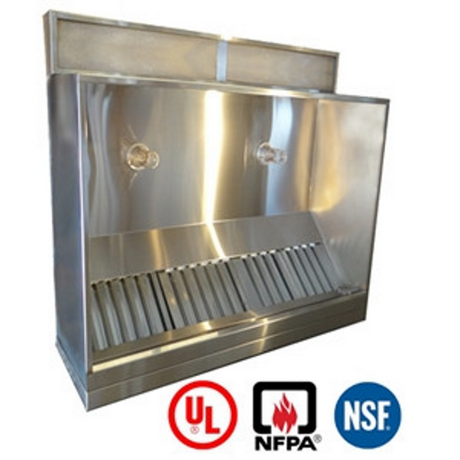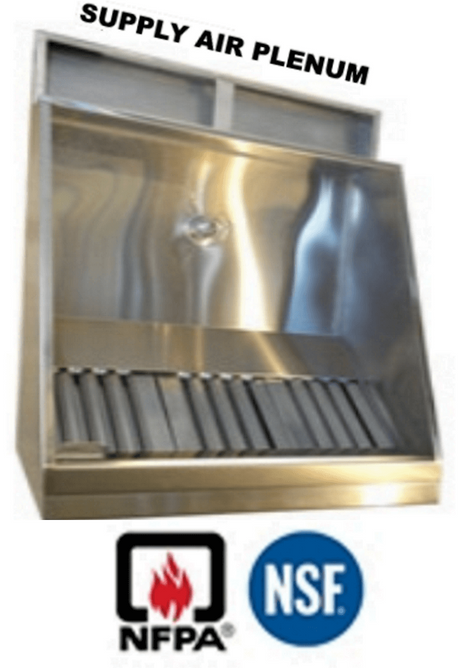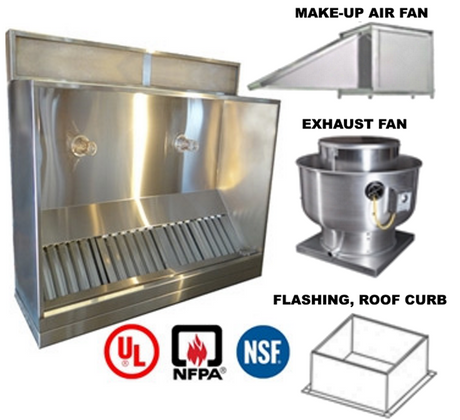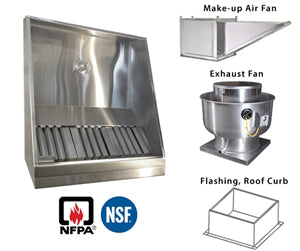Need Help Designing Your Kitchen Layout? Email us: bids@jeansrs.com
Vent Hood Systems
ProductsJRSVHC10-FF 10ft Jean's Concession Vent Hood with Exhaust Fan and Flashing
$2,475.00Unit price /UnavailableJRSVHC10 10ft Jean's Concession Vent Hood
$1,958.00Unit price /UnavailableJRSVH10 10ft Jean's Canopy Vent Hood
$3,095.00Unit price /UnavailableJRSVHSP10 10ft Jean's Shallow Front Vent Hood
$3,095.00Unit price /UnavailableJRSVH10-P KIT 10ft Jean's Canopy Vent Hood with Plenum
$3,295.00Unit price /UnavailableJRSVHSP10-P 10ft Jean's Shallow Front Vent Hood with Plenum
$3,295.00Unit price /UnavailableJRSVH10-PFF 10ft Jean's Canopy Vent Hood with Plenum, Exhaust Fan, Make-up Air Fan and Flashing
$5,197.84Unit price /Unavailable- $5,395.00Unit price /Unavailable
Vent Hood Systems
Types Of Restaurant Vent Hoods:
Type 1 Vent Hoods: Type 1 restaurant vent hoods serve the crucial purpose of removing grease-laden vapors, heat, and smoke generated during cooking. These commercial vent hoods are commonly equipped with fire suppression systems and feature grease-rated ducts to comply with relevant codes like NFPA96, The International Mechanical Code (IMC), and the International Building Code (IBC). In addition, Type 1 vent hoods are outfitted with grease-rated exhaust fans to ensure efficient ventilation and safety.
Type 2 Vent Hoods: Type 2 restaurant vent hoods are specially designed for areas where heat and steam are produced without grease vapors, such as dishwashers, convection ovens, and steamers. These hoods, also known as condensate hoods, steam hoods, and dish hoods, typically do not incorporate fire suppression systems. Moreover, exhaust fans used in Type 2 applications do not require a grease rating. It's important to note that the duct requirements for these hoods differ from Type 1 hoods. For the most accurate information regarding hood design and installation, it's advisable to consult with the local inspector or the Authority Holding Jurisdiction (AHJ) and confirm any additional installation prerequisites.
Commercial Kitchen Ventilation System: Vent hoods are a crucial part of your commercial kitchen. It is important to match the right commercial kitchen ventilation system to the equipment you use. A properly designed restaurant exhaust hood keeps your business running safely and efficiently. Vent hoods used in restaurants are different than those used in domestic kitchens due to the excess heat, vapor and air emitted in commercial kitchens. Our years of experience in understanding these requirements combine so that we can help you choose a commercial kitchen ventilation system suited to optimize your kitchen. Browse through our selection of commercial grease hoods, vent hoods, make up air fans and restaurant exhaust fans to use on your project.
We strongly encourage you to contact us if you have any question regarding your commercial kitchen ventilation system, exhaust fan, vent hoods or selecting your cooking equipment.
Types Of Restaurant Vent Hoods:
Type 1 Vent Hoods: Type 1 restaurant vent hoods serve the crucial purpose of removing grease-laden vapors, heat, and smoke generated during cooking. These commercial vent hoods are commonly equipped with fire suppression systems and feature grease-rated ducts to comply with relevant codes like NFPA96, The International Mechanical Code (IMC), and the International Building Code (IBC). In addition, Type 1 vent hoods are outfitted with grease-rated exhaust fans to ensure efficient ventilation and safety.
Type 2 Vent Hoods: Type 2 restaurant vent hoods are specially designed for areas where heat and steam are produced without grease vapors, such as dishwashers, convection ovens, and steamers. These hoods, also known as condensate hoods, steam hoods, and dish hoods, typically do not incorporate fire suppression systems. Moreover, exhaust fans used in Type 2 applications do not require a grease rating. It's important to note that the duct requirements for these hoods differ from Type 1 hoods. For the most accurate information regarding hood design and installation, it's advisable to consult with the local inspector or the Authority Holding Jurisdiction (AHJ) and confirm any additional installation prerequisites.
Commercial Kitchen Ventilation System: Vent hoods are a crucial part of your commercial kitchen. It is important to match the right commercial kitchen ventilation system to the equipment you use. A properly designed restaurant exhaust hood keeps your business running safely and efficiently. Vent hoods used in restaurants are different than those used in domestic kitchens due to the excess heat, vapor and air emitted in commercial kitchens. Our years of experience in understanding these requirements combine so that we can help you choose a commercial kitchen ventilation system suited to optimize your kitchen. Browse through our selection of commercial grease hoods, vent hoods, make up air fans and restaurant exhaust fans to use on your project.
We strongly encourage you to contact us if you have any question regarding your commercial kitchen ventilation system, exhaust fan, vent hoods or selecting your cooking equipment.


